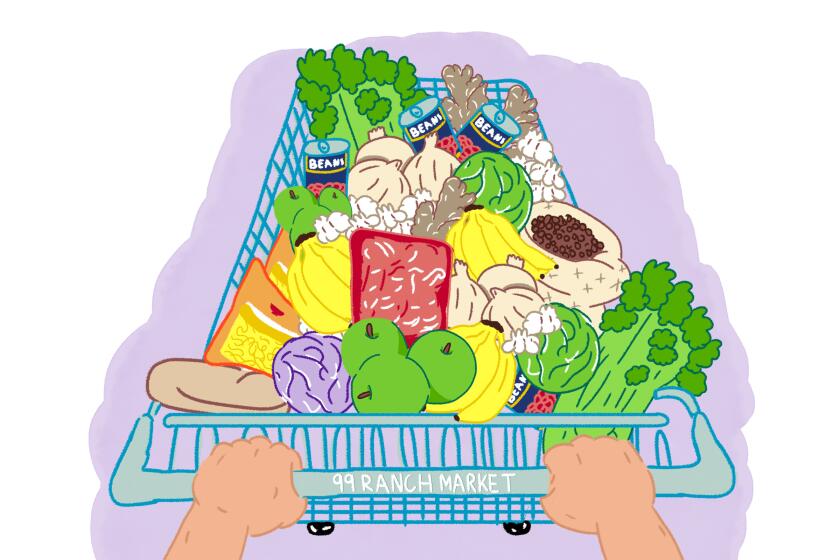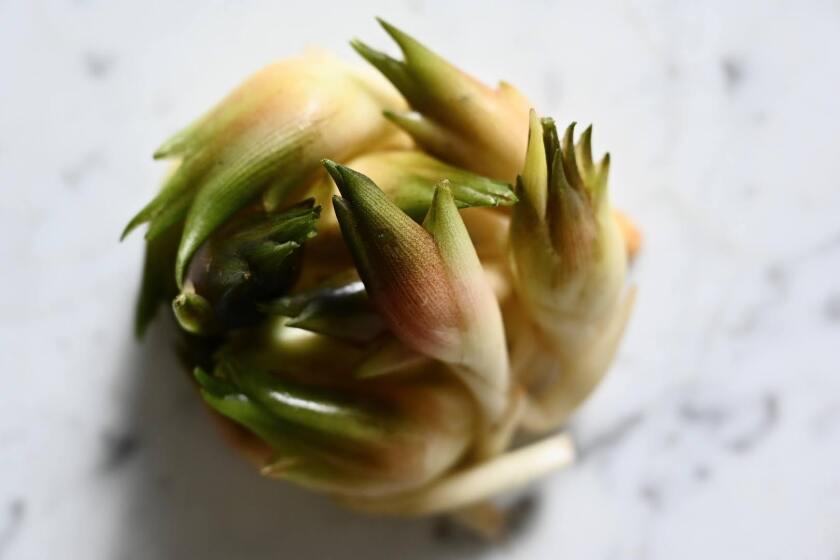
- Share via
For many Asian Americans across California, 99 Ranch is much more than just a grocery store. It’s a pilgrimage. When I was a child growing up in the San Fernando Valley in the 1990s, my Taiwanese parents would drive over an hour east to the San Gabriel Valley every single weekend just to shop at 99 Ranch.
They’d load up on squirming live shrimp, jadeite bundles of water spinach and fat, oblong lotus roots. For them, it was a refuge where they could indulge in the flavors of their native Taiwan. While there were plenty of Asian supermarkets to choose from in the ’90s, we always went to 99 Ranch because it had the largest and best selection of goods. Right before we hit the cashier, my brother and I would each get a singular pick of something sweet. I’d go for a Taiwanese-style flan. My brother liked the chocolate-filled koala-shaped cookies from Japan.
“I loved the White Rabbit candy,” says Jonson Chen, citing a sweet milk candy from Shanghai. Mustached with slicked-back hair, Chen is the chairman of 99 Ranch Market. I meet him and his sister, Alice Chen, the company’s chief executive, inside their newest store location in Eastvale, a 50,000-square-foot compound that includes a warehouse and a food hall. The store opened in February; the food hall is set to open in August. The Chen siblings represent a new generation of leadership at the nearly 40-year-old grocery chain, helming its expansion across the United States.
Lucas Kwan Peterson revisits Pau Pau, her past and some beloved foods through memories of her favorite market, “Ranch 99.”
The first 99 Ranch was opened in 1984 in Westminster by Jonson and Alice’s father, Roger Chen, a Taiwanese immigrant from the western city of Taichung. Headquartered in Buena Park with 58 stores in 11 states, it is now one of the largest Asian supermarket chains in America. While pan-Asian in its offerings, the company caters heavily to ethnically Chinese communities, whose preferences and cultural habits have shaped what it stocks in stores. The “ranch” in 99 Ranch means freshness (“as if straight from a ranch,” Alice says) and the “99,” in Mandarin Chinese pronounced jiu jiu, is a homophone for longevity. “The double meaning is 99%. It’s almost perfect, but not quite,” Alice, fresh-faced in a pristine white blouse, says. “We’re always trying to be better. It’s very Asian. No one is 100%.”
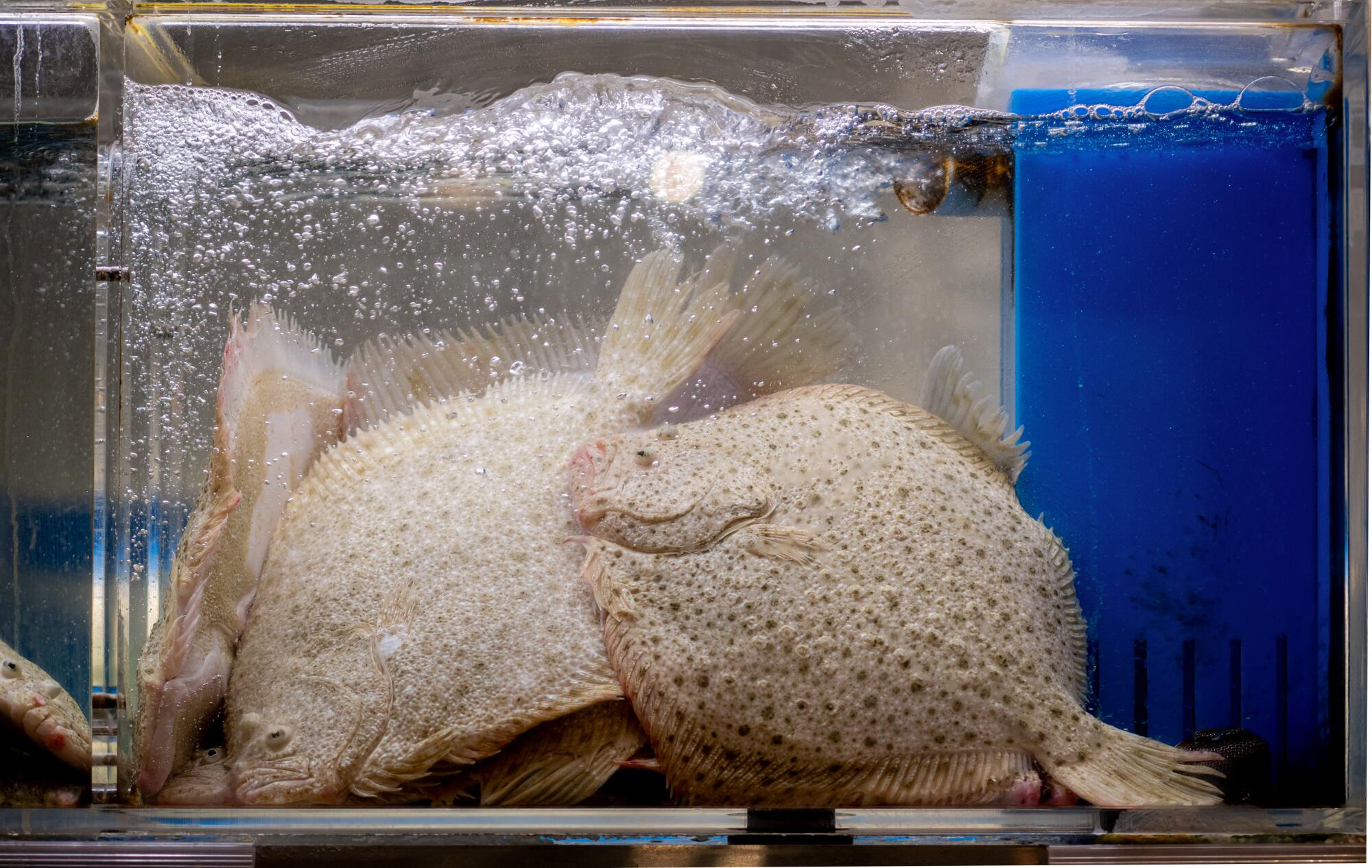
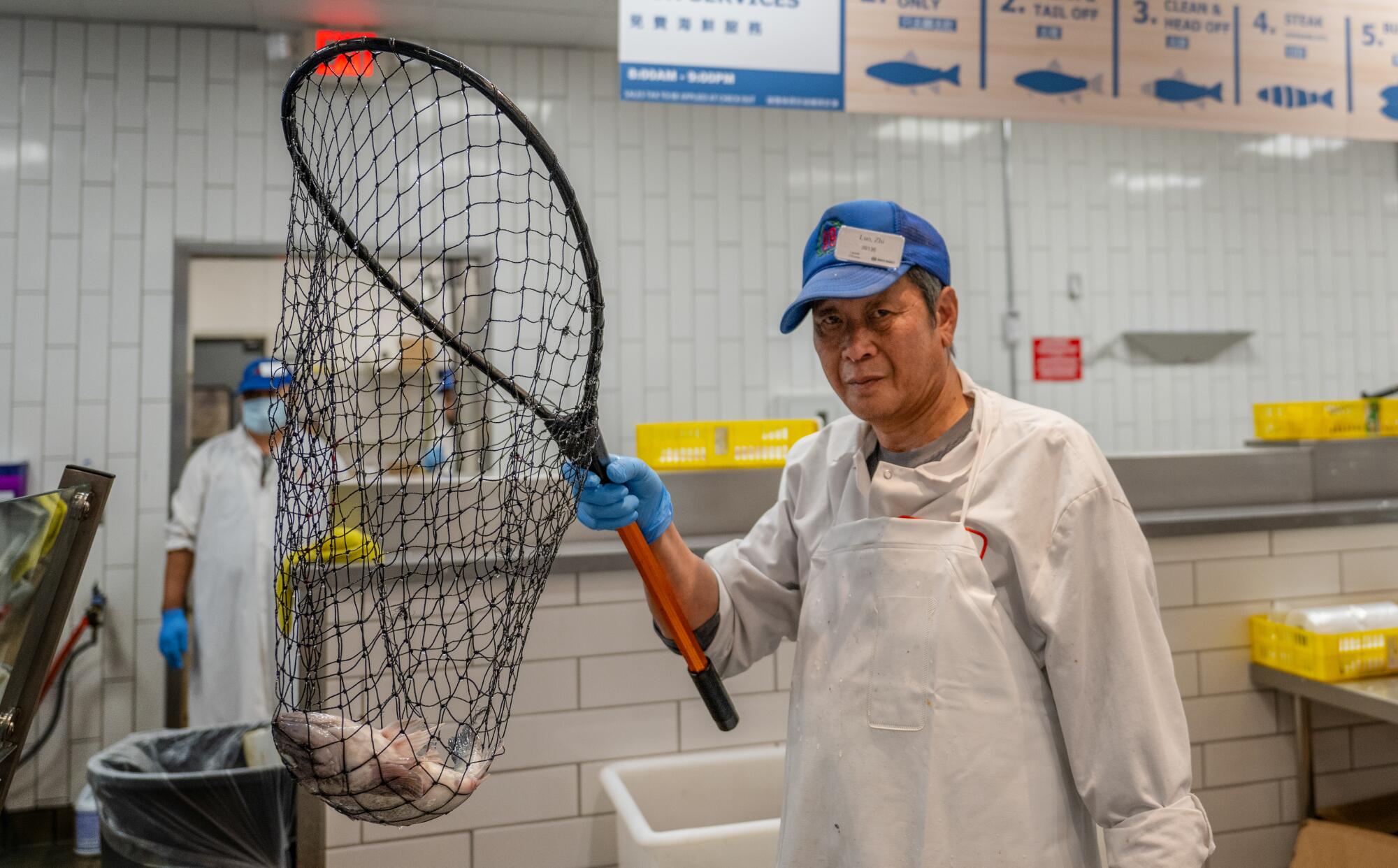

Like many children of the Chinese-speaking diaspora in California, Alice and Jonson grew up with fond memories of the grocery chain. But unlike the rest of us, they had a front-row seat. The siblings spent many weekends ensconced behind the customer service counter at the store “bored out of our minds,” Jonson jokes. But he still remembers with fondness the retrofitted pickup trucks with steel tanks that pulled up to his parents’ grocery stores in the early morning.
“You’d look inside and it would be dark. But it was full of catfish,” Jonson tells me. Back then, workers would drag the fish out with nets, plop them into a trash can and wheel the trash can into the store, where the fish would be deposited into bubbling, iridescent fish tanks for customers to pick and choose from.
Chef Ki Kim took a trip to his native South Korea to reconnect with the ingredients that drive his seasonal menus at Koreatown’s Kinn. He shares what he’s using for his spring-into-summer menu.
Live fish tanks are a distinct feature of Asian grocery stores — a guarantee of freshness and a prerequisite for many families who immigrated from countries where wet markets are a staple. “There are hundreds of varieties of fish, but it was a matter of figuring out what was available live and what people wanted to see,” Jonson says.
On the logistics end, the company had to figure out a lot from scratch: how to transport live fish into the store, import food from Asia, and create a network of farms that could grow hard-to-find vegetables like water spinach and bitter melon that their consumers wanted and craved. “Initially it was just [Roger] calling up random suppliers in Taiwan asking if they would ship to America,” Alice says.
They eventually figured it out: Today, most of the grocery chain’s produce is grown on specialty farms across the United States and Mexico. It has a network of over 7,000 employees — 82% of them bilingual — and a team of buyers keeping close tabs on what people are craving. These days, those trends include Filipino ingredients, skewers and spicy, tongue-numbing Sichuan flavors. “We are a part of the Asian community. We hire from the community. The customers are also the workers,” Jonson tells me.
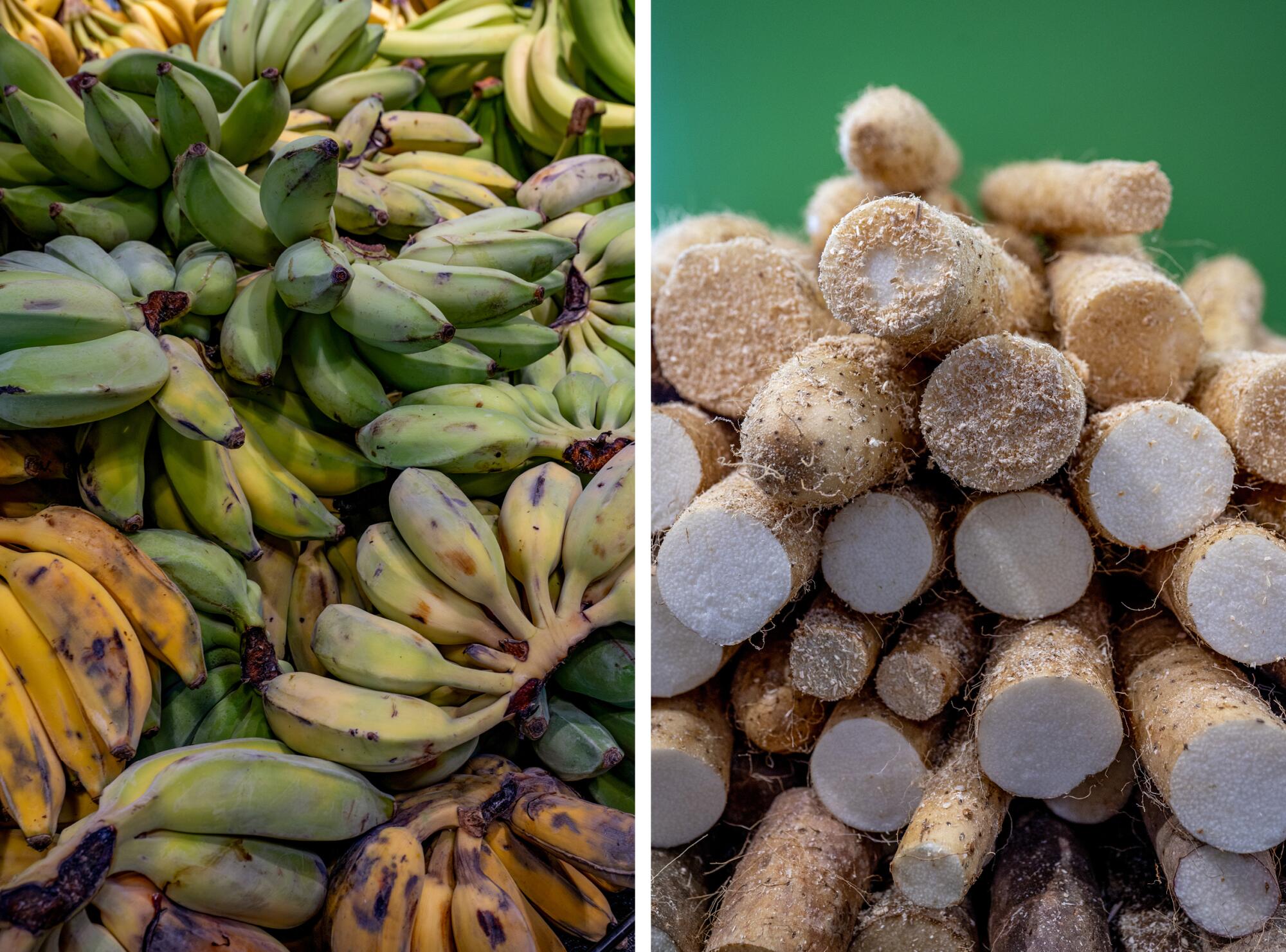

Now, 99 Ranch was not the first Asian grocery store in Southern California. In the late 1970s, there were already a few in the San Gabriel Valley. But the chain stood out because of its expansion strategy. “They did their market research to determine where there were communities needing to be served,” says David R. Chan, a Los Angeles food blogger and retired tax lawyer who has eaten at thousands of Chinese restaurants in America since the 1950s.
The company’s third location at a Rowland Heights shopping plaza on Nogales Street, which opened in 1989, marked a turning point for the brand. Chan, who visited the supermarket when it first opened and in subsequent years, remembers a progressive increase in Chinese restaurants that popped up in the plaza and the surrounding neighborhood after the grocery store’s opening.
“Chen had a broader real estate vision to develop Asian shopping centers anchored by a supermarket, as opposed to merely operating a supermarket and perhaps adding additional locations,” Chan says. The eighth (though technically the seventh because they don’t count No. 4 — an unlucky number in Chinese culture) location, in a former drive-in movie theater in San Gabriel, opened in 1991, became another anchor and is arguably the chain’s most iconic location today. “Back then, the areas of Arcadia, Alhambra, Rosemead, Temple City, San Gabriel were starting to be known as Little Taipei,” Jonson says. “That store was able to create a Chinese community.”
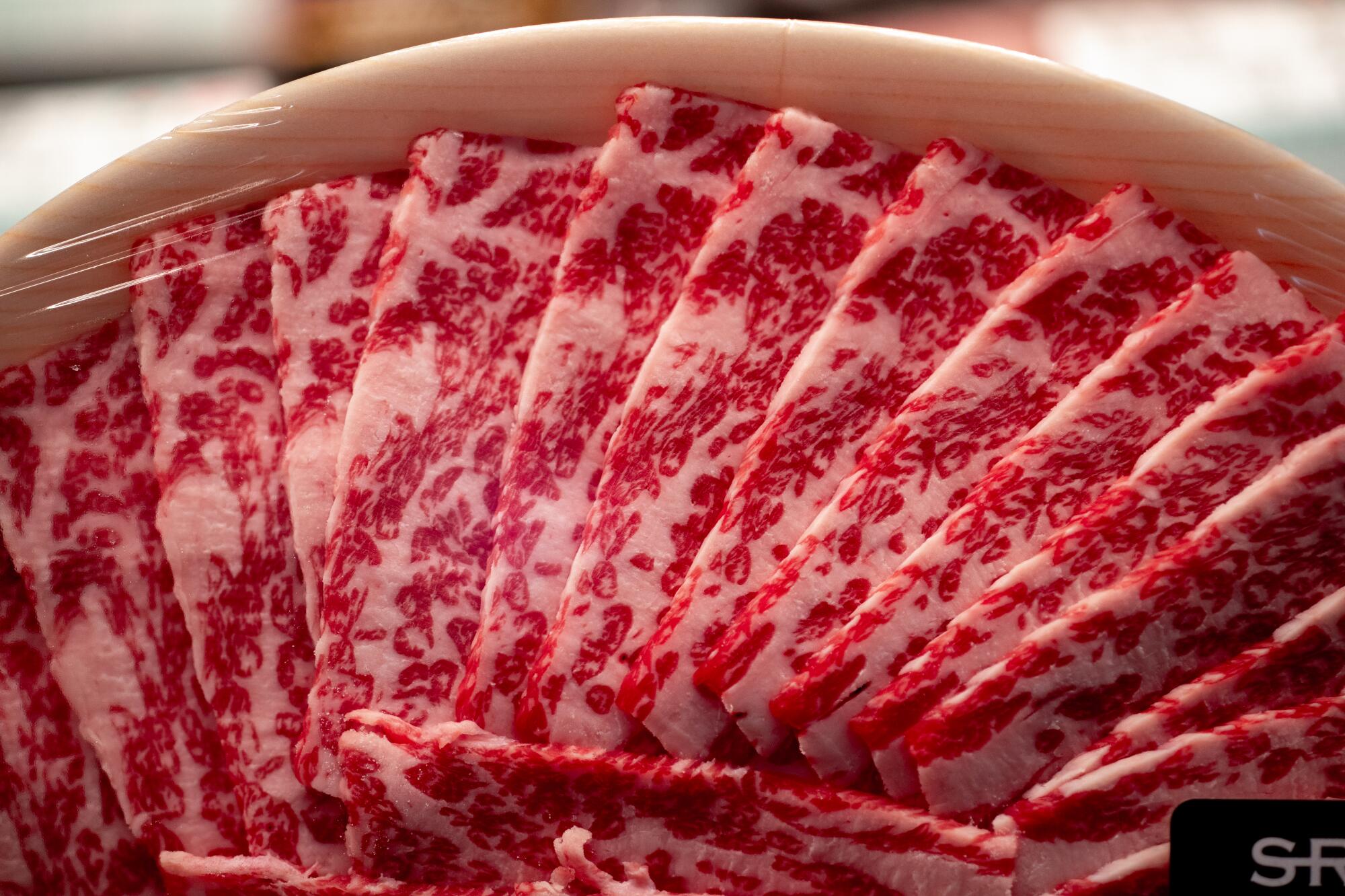
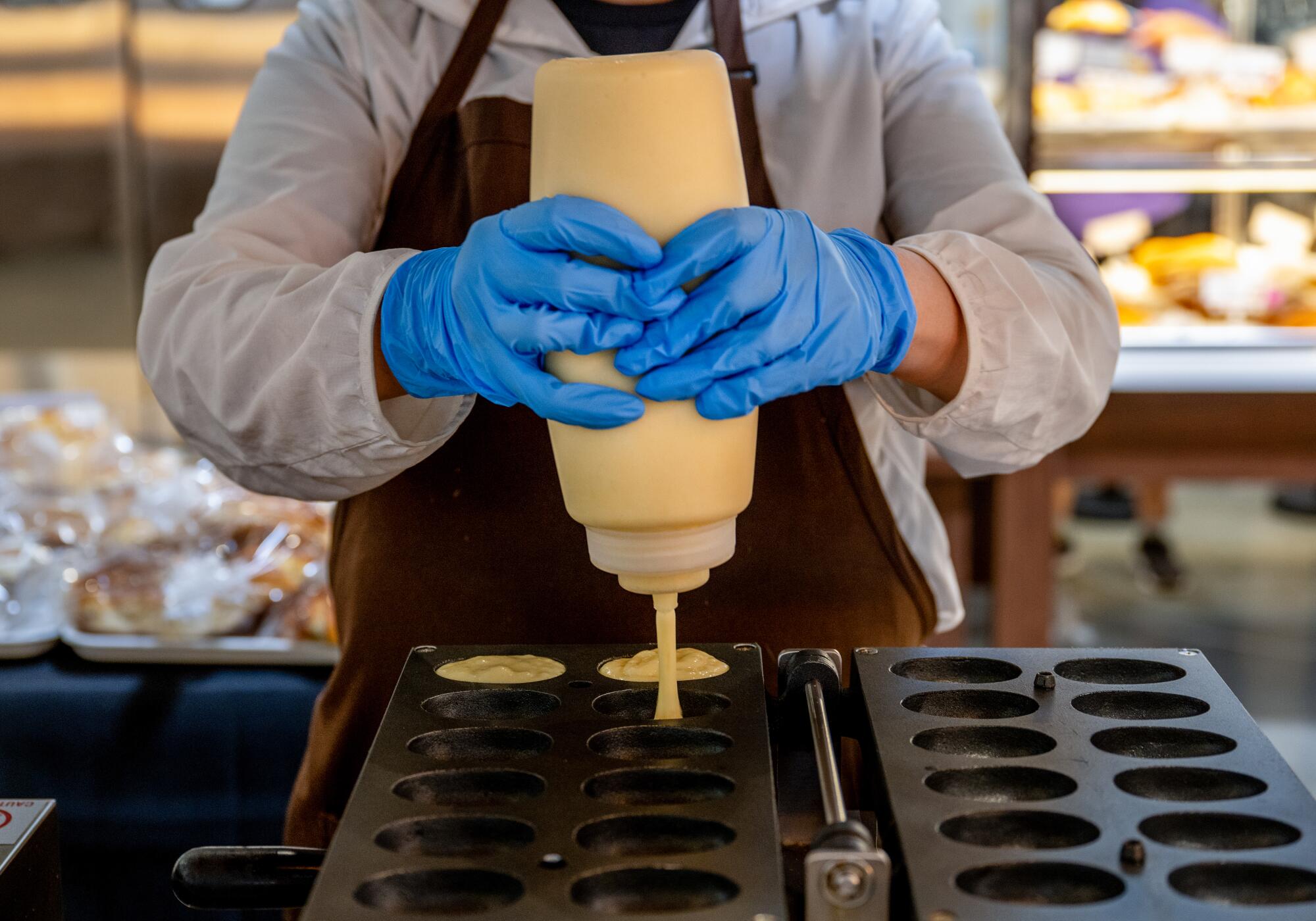
Today, Jonson focuses on the brand’s real estate expansion strategy, keeping close tabs on where Chinese-speaking communities are spreading across America. Since 2020, 99 Ranch has added seven stores to the chain.
“99 Ranch Market is the gold standard for market research as to where Chinese communities are showing up. And this is not just in California but all over the country,” says Chan, who keeps a database of Chinese restaurant openings all over the U.S.
As children, neither Jonson nor Alice anticipated taking over their dad’s company. Their father never pressured them to work for him but always kept the door open in case they showed interest. They tell me that while they grew up with the grocery store, it took a while for them to realize just how big the brand had gotten. “We just told people he was in the import and export business,” Alice says. It wasn’t until she wrote a college thesis on the family company and had to interview her father that the penny dropped. “He just never shared anything with us prior,” she says.
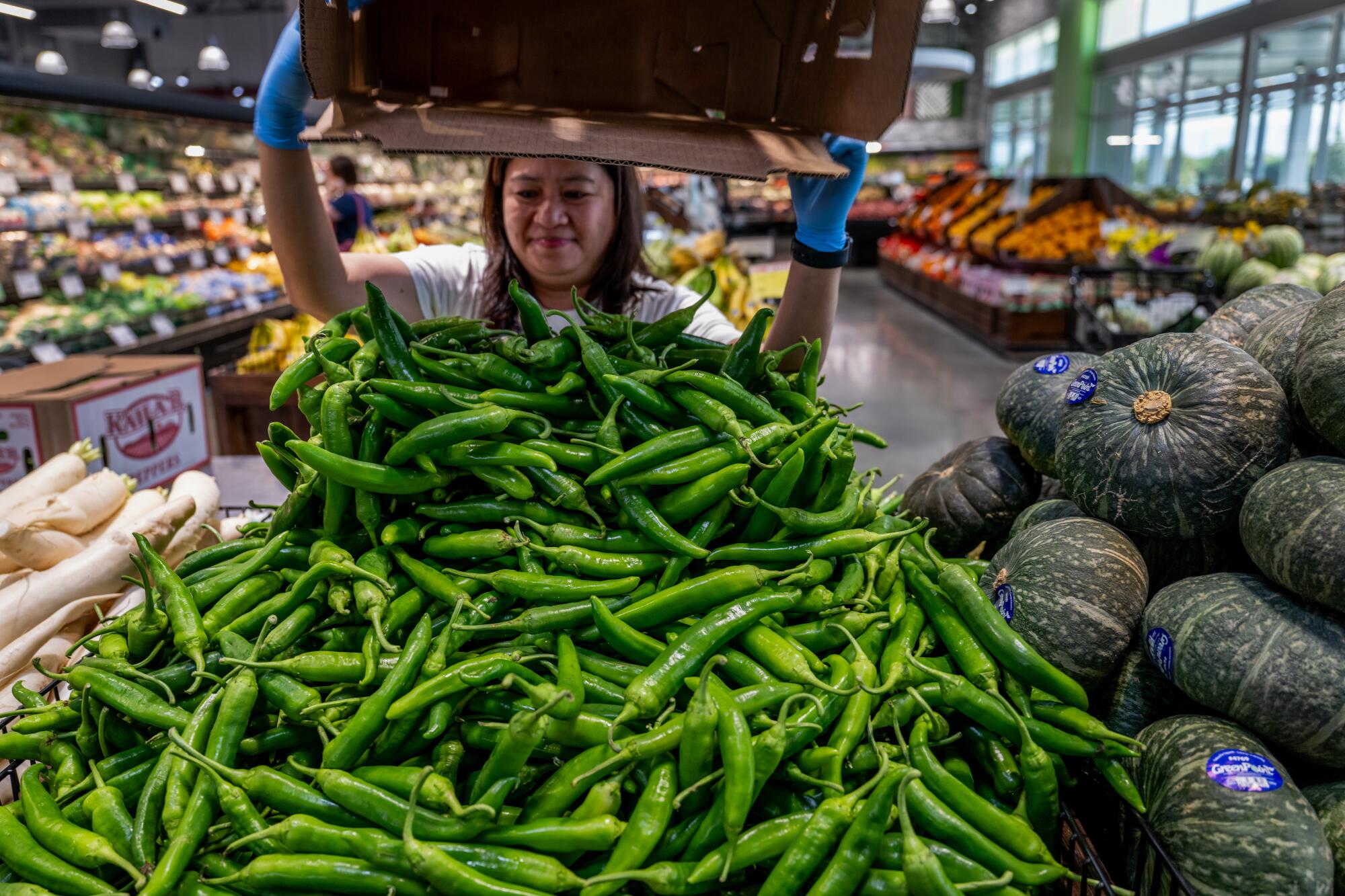
Today, as the second-generation owners, Jonson and Alice’s job is to keep up with the evolution of Asian communities in America, which, they point out, have different shopping habits than previous generations. Generally speaking, there’s a greater demand for frozen products and prepared foods. There’s not as big a demand for butchery; people today would rather have their meat presliced and packaged.
Yet certain elements — like the live fish tanks — have stayed the same (though the retrofitted pickups have mostly been phased out; there are now dedicated live-haul trucks for the fish).
The siblings take me on a stroll through the aisles of the Eastvale market. We walk up to a tank dedicated to spot prawns — fat, reddish brown and almost translucent underneath the fluorescent overhead lights. Jonson notices me marveling at them. “They’re from Newport Beach’s Dory Fleet Fish Market. People will go there every Saturday morning. So you can go there and wait in line. They are usually sold out within the first hour,” he says. “Or you can just go to a 99 Ranch.”
Clarissa Wei is a writer and cookbook author. Her forthcoming book, “Made in Taiwan: Recipes and Stories From the Island Nation” (SS Element), will publish in the fall.
More to Read
Eat your way across L.A.
Get our weekly Tasting Notes newsletter for reviews, news and more.
You may occasionally receive promotional content from the Los Angeles Times.
